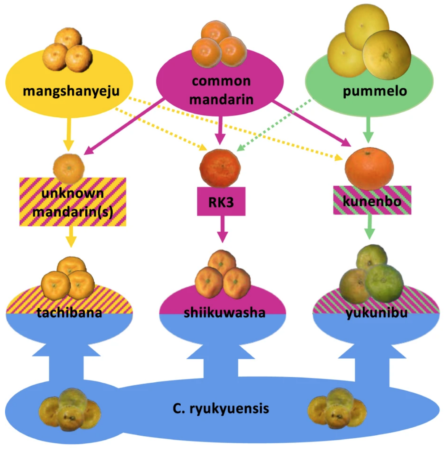- 26 million hectares of forest were lost in 2020.
- Genetic groups in grizzly bears line up with Indigenous languages in British Columbia. How about the trees, though?
- But why weren’t grizzly bears domesticated? Because they’re not friendly, feedable, fecund and family-friendly.
- Drones and wheat breeding.
- Crowdsourcing okra evaluation. No drones involved.
- Health-conscious urban Indians eat millet for health reasons. Goes great with okra.
- The Common Table: sharing stories about reforming the food system. Like a couple of the above.
How to really make seed systems sustainable
Attentive readers may remember a reference here to Crops to End Hunger’s white paper on economically sustainable seed systems. This provides…
…recommendations for how One CGIAR may want to adjust its approaches and collaboration with National Breeding Programs and private sector entities to (i) be more successful in developing and deploying newly developed varieties, and (ii) support the evolution towards a more effective, sustainable local seed sector, with appropriate public and regulatory capacities and a vibrant entrepreneurial sector.
There’s since been a nice interview with one of the authors. But the reason for bringing it up now is that Oxfam Novib has published a reaction.
While recognizing some important positives (e.g., the aim to diversify the range of public-bred crop varieties available to smallholder farmers), Oxfam Novib also expresses some serious concerns. These are perhaps best encapsulated in the following observation:
The paper’s recommendation that the One CG develop a centralized system for germplasm licensing and revenue management between the CG centers and national breeding programs implies that seed revenues will be derived from smallholder farmers – but farmers and farmer groups will be excluded from involvement in creating new varieties and generating income from them.
It will be interesting to see One CGIAR’s response.
Nibbles: Quinoa info, Hybrid rye, New tobacco, GMOs
- If you’re into quinoa, you’re probably going to need this directory.
- Hybrid rye is becoming a useful participant in maize-soybean rotations in the Corn Belt where giant ragweed is a problem.
- New insect-trapping wild tobacco species described from Australia.
- Biotechnologist and social scientist in conversation about genetic modification and gene editing.
Boffins unravel mandarins
I was just going to include the paper Diversification of mandarin citrus by hybrid speciation and apomixis in a forthcoming Brainfood, but the very different approaches taken in the two articles on the paper that I have seen convinced me to give it a bit more space.
The piece in The Packer has very much the industry take, and highlights the contribution of the University of Florida authors: this new information will make breeding easier, including to fight citrus greening.

On the other hand, the press release from the Okinawa Institute of Science and Technology makes much more of how the paper unravels the origin of shiikuwasha and tachibana, which are culturally important citrus fruits in Japan, though not very significant economically.
Something for everyone.
Nibbles: Black sheep, Salty rice, Spanish melons, Olive diversity, Food sculpture, Seed art, Navajo peaches, Grain amaranth, PNG yams, Avocado recipes, Abbasid cooking
- Just back from a nice holiday, and greeted by Jeremy’s latest newsletter, which includes, among many delights, a post from Old European Culture on black sheep in the Balkans.
- Traditional salt-tolerant rice varieties making a comeback in India.
- Traditional melon varieties exhibited by genebank in Spain.
- Trying to make the most of traditional olive varieties.
- Traditional foods are depicted in stone on Seville’s cathedral.
- And more recent attempts to celebrate biodiversity in art.
- I guess one could call traditional these old peaches that used to be grown by the Navajo. Have blogged about them before, check it out.
- No doubt that amaranth is a traditional crop in Central America. I doubt that it will “feed the world,” but it can certainly feed a whole bunch more people. Thanks to people like Roxanne Swentzell.
- There’s nothing more traditional than yams in Papua New Guinea. For 50,000 years.
- How to remix a traditional food like stuffed avocado.
- How many of the traditional recipes in these Abbasid and later Arab cookbooks have been remixed, I wonder?